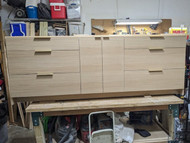Toughest Domestic Hardwood Veneers
Feb 19th 2024
Real wood can be expensive, and even though wood veneer is more affordable than solid hardwood, it’s still not cheap. You want to make sure you get the most for your investment, right?
Well, start that project off on the right foot by choosing a tough veneer, especially if the surface you’ll be veneering will get a lot of traffic, such as a tabletop.
Let’s break down some of the toughest domestic hardwood veneers of the bunch.
Why a Hard, Tough, Wood Veneer Matters
With any wood project, toughness matters, because high traffic and impacts can scuff and scratch the surface of the wood, marring it, even if you’ve finished it.
This is a cosmetic concern with solid wood, but solid wood can be stripped, sanded, and refinished. With veneer, there’s only so far you can go. It’s very thin, and attempting to refinish can wear straight through to the backer - ruining it.
So, the tougher the better.
To understand relative hardwood “toughness,” we’re going to look at a measurement called Janka hardness.
What Is Janka Hardness?
Janka hardness is a scale that measures how much wood resists an impression. Specifically, it measures how much force is required to embed a .444” steel ball into the wood at a depth that accounts for half of its diameter.
The higher the Janka hardness rating, the harder (and tougher) the wood. So, what are the hardest and toughest domestic hardwood veneers?
Let’s find out.
Ironwood Veneer
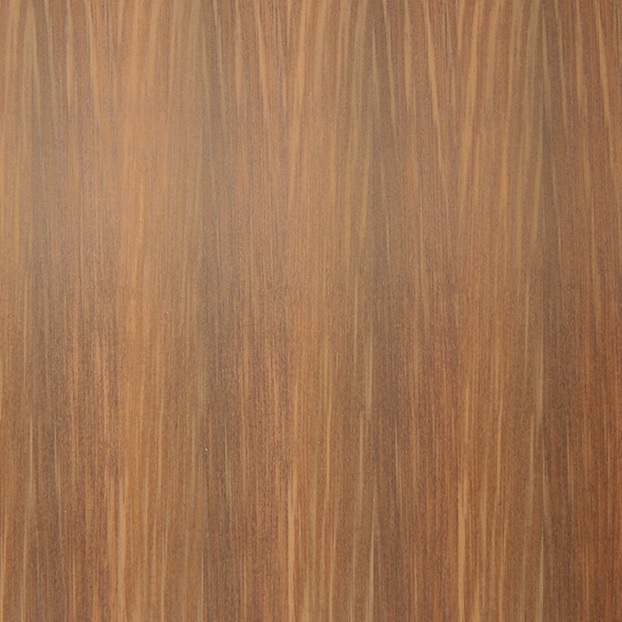
Ironwood, and subsequently ironwood veneer, also known as ipe veneer, is one of the hardest, toughest woods in the world, not just in North America.
With a Janka hardness rating of 3,660 lbf or 16,280 N, it’s way at the top of the list, and comfortably sits head and shoulders above hickory veneer, the next best contender.
Ironwood veneer can be expensive, but it is extremely tough, and you would have to try to mar its surface. This makes it good for finishing tabletops, walls, and other high-traffic areas that are likely to be subject to impacts and scratches.
Moreover, it has a beautiful, rich brown tone and luster, and though it doesn’t respond well to penetrating oils, can take a beautiful luster from a topcoat.
Hickory Veneer
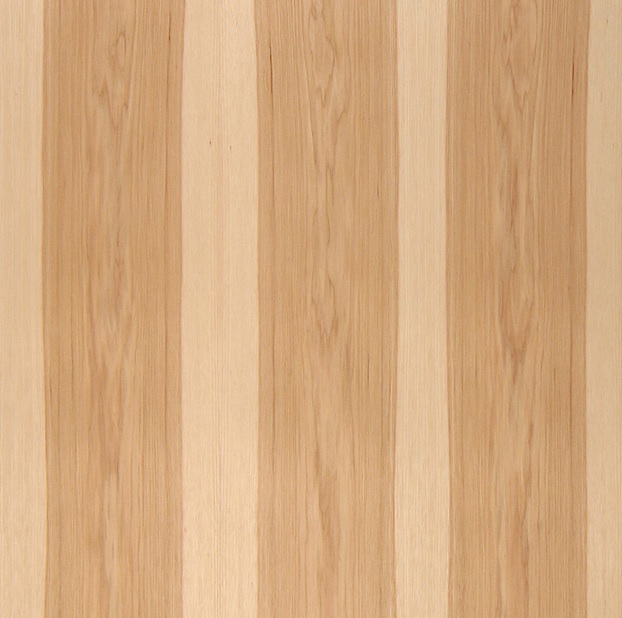
Next on the list is hickory veneer, which is another tough nut to crack. With a Janka hardness rating of 1820 lbf, it’s a ridiculously hard wood, even though it’s hardly half of ironwood’s hardness.
Still, hickory presents a tough, sturdy surface that is highly resistant to scuffing, scratching, indentation, and wear. This makes it good for use in paneling, bar tops, tabletops, cabinets, and more.
Also, hickory veneer, though sanding it will take time, responds well to stains and finishes and is available in a bunch of unique cuts, including pecky and rustic cuts.
Hard Maple Veneer
With a Janka hardness rating of 1,450, hard maple veneer is another really tough wood veneer that’s great for a lot of projects.
It is important to note, however, that hard maple is much harder than softer grades - so be judicious in your selection and work with an expert if you are unsure about species or cuts.
All the same, maple is relatively affordable, widely available, and is easy to sand. It doesn’t respond all that well to staining, but the bright white color, and often beautiful figure of the wood, makes up for that.
Also, you can look into curly maple (also known as tiger maple or flame maple) which has one of the most beautiful natural figures of all hardwoods.
White Oak Veneer
Tough, relatively affordable, and widely available in North America, white oak veneer is also another solid choice.
It has a Janka hardness rating of 1,360 lbf, just a little bit less than hard maple, and as a result is another great choice for surfaces that will get a lot of traffic.
White oak is stately, too; not as eye-catching as birdseye maple, but with a timeless touch that throws inherently colonial vibes. Also, white oak often has a beautiful fleck pattern, a result of the wood’s medullary rays that give it a naturally appealing figure.
Beech Veneer
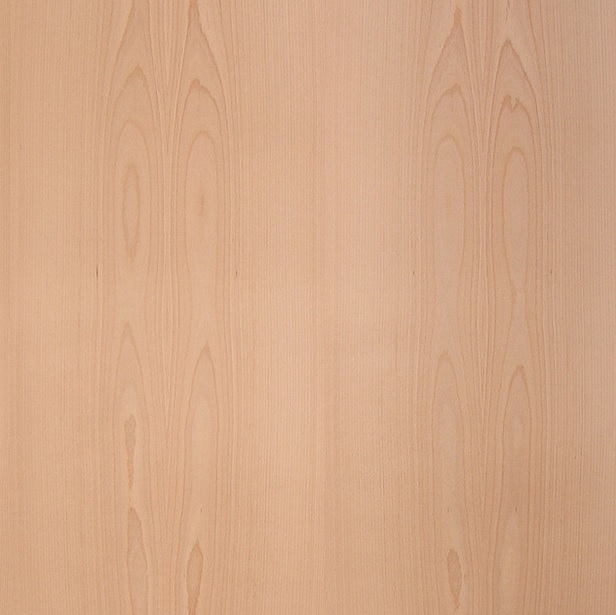
Beech veneer is another great choice if you’re looking for a native, widely available North American hardwood veneer that is really tough.
This shouldn’t come as a surprise - after all, beech is a very close relative to oak - but it’s also really hard. With a Janka rating of 1,300, it’s just about the same as white oak (and harder than red oak, which has a Janka rating of 1,290).
Beech veneer also has a pleasant, light-toned color that works with a wide range of interiors, and which will be agreeable to many different types of projects, from cabinetry to paneling.
Walnut Veneer
Those of you that appreciate naturally dark wood will be happy to hear that black walnut veneer is also pretty tough. With a Janka rating of 1,010, it’s not too far behind the other hardwoods mentioned here.
This is one to go with if you want a dark wood that you don’t necessarily need to stain - just be aware, it is not as resistant to wear as the other species mentioned.
Cherry Veneer

Last but not least, for those of you that appreciate a truly regal air, we have cherry veneer.
Word of caution: with a Janka rating of 950, it’s easily the softest wood here. Still, it’s a lot tougher than other veneers made of softwood like pine and cedar.
If you love cherry, you can also give it a tough polyurethane or lacquer finish to protect it - or, you can use a harder wood like beech or hickory, and stain it to look like cherry.
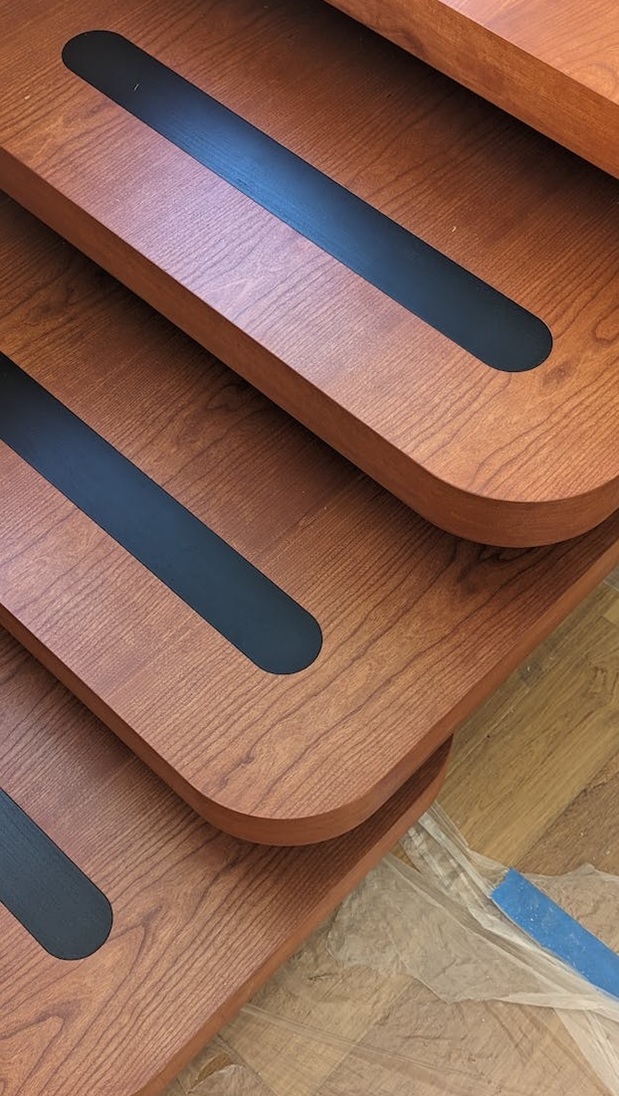
Why Domestic Hardwood Veneers?
One final note before you choose a wood for your project - if you’re wondering why we went with all domestic wood veneers, the reason is because domestic woods have a shorter supply chain than exotics that are imported.
And, for what it’s worth, thanks to our Plant It Forward program, we’re planting a tree for every order placed with us - who knows, your order might be replenishing one of the species mentioned here.
